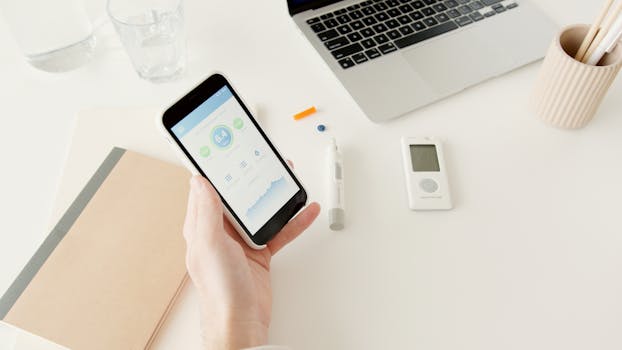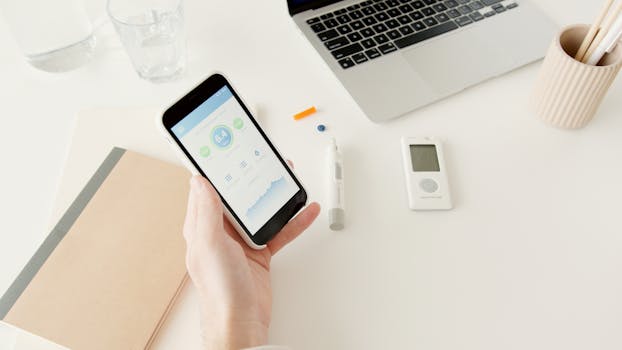
Wearable Health Devices: Monitoring Chronic Conditions Remotely
In recent years, the advent of wearable health devices has revolutionized the way we approach healthcare, particularly in the management of chronic conditions. These innovative devices allow patients to monitor their health metrics in real-time, enabling timely interventions and fostering a more proactive approach to health management. In this blog post, we will explore how wearable health devices are transforming chronic condition management, their benefits, challenges, and real-world applications.
The Rise of Wearable Health Technology
The global wearable technology market is on a rapid growth trajectory, projected to reach over $60 billion by 2023, according to a report by Statista. This surge is largely driven by the increasing prevalence of chronic conditions such as diabetes, heart disease, and obesity. The need for continuous monitoring and management of these conditions has made wearable devices an essential tool for both patients and healthcare providers.
Understanding Chronic Conditions
Chronic conditions are long-lasting health issues that require ongoing management. Examples include:
- Diabetes: Affects how your body processes blood sugar.
- Hypertension: High blood pressure that can lead to severe complications.
- Heart Disease: A range of conditions affecting the heart’s function.
- Asthma: A chronic respiratory condition that can be life-threatening if not managed properly.
According to the Centers for Disease Control and Prevention (CDC), chronic diseases are responsible for 7 out of 10 deaths in the U.S., highlighting the critical need for effective management strategies.
How Wearable Devices Work
Wearable health devices, such as smartwatches, fitness trackers, and medical-grade monitors, are equipped with sensors that collect various health metrics. These devices typically monitor:
- Heart Rate: Essential for detecting arrhythmias and other cardiovascular issues.
- Blood Pressure: Particularly helpful for patients with hypertension.
- Blood Glucose Levels: Crucial for diabetes management.
- Activity Levels: Encouraging physical activity to combat obesity and related conditions.
Data collected by these devices is transmitted to mobile applications or cloud services, where it can be analyzed and shared with healthcare providers. This real-time monitoring allows for immediate adjustments in treatment plans, enhancing patient outcomes.
Benefits of Wearable Health Devices
The benefits of using wearable health devices for monitoring chronic conditions are substantial:
- Improved Patient Engagement: Wearable devices empower patients to take an active role in their health management. Studies have shown that patients who use these devices are more likely to adhere to treatment regimens.
- Early Detection of Issues: Continuous monitoring can lead to the early detection of complications, allowing for timely interventions that can save lives.
- Data-Driven Decisions: Healthcare providers can make informed decisions based on real-time data, enhancing the quality of care.
- Convenience: Patients can monitor their health from the comfort of their homes, reducing the need for frequent hospital visits.
Real-World Applications
Many healthcare organizations and patients are already taking advantage of wearable health devices to manage chronic conditions:
1. Diabetes Management
Wearable devices like the Continuous Glucose Monitor (CGM) allow diabetic patients to track their blood sugar levels in real-time. Devices such as the Dexcom G6 have been shown to improve glycemic control significantly. According to a study published in the Journal of Diabetes Science and Technology, patients using CGM devices experienced a 1% reduction in HbA1c levels.
2. Heart Disease Monitoring
Wearable tech such as the Apple Watch and Fitbit can monitor heart rate and detect irregularities. These devices can alert users to potential issues, prompting them to seek medical attention. A study from JAMA Cardiology found that wearable devices could effectively detect atrial fibrillation in patients, leading to earlier diagnosis and treatment.
3. Asthma Management
Wearable devices such as the AsthmaSense app provide real-time data on air quality and personal health metrics, helping asthma patients manage their condition more effectively. Studies have shown that patients who use mobile health applications report fewer asthma symptoms and improved quality of life.
Challenges of Wearable Health Devices
While the benefits of wearable health devices are evident, several challenges remain:
- Data Privacy: The collection of personal health data raises concerns about privacy and security. Patients must be assured that their data is protected.
- Accuracy of Data: Not all wearable devices are created equal. It’s crucial to ensure that the data collected is accurate and reliable.
- Accessibility: The cost of wearable devices can be prohibitive for some patients, particularly those without health insurance.
Healthcare providers must work to address these challenges to maximize the potential of wearable health technology.
The Future of Wearable Health Technology
The future of wearable health devices is promising. As technology continues to evolve, we can expect greater integration of artificial intelligence and machine learning to provide even more personalized health insights. Additionally, advancements in sensor technology will lead to more accurate and diverse health metrics being monitored.
Furthermore, with the rise of telehealth, wearable devices will play a crucial role in remote patient management, allowing healthcare providers to monitor their patients’ conditions without the need for in-person visits.
Frequently Asked Questions (FAQ)
1. Are wearable health devices accurate?
Most wearable health devices provide reasonably accurate data, but accuracy can vary by device. It’s essential to choose devices that are clinically validated and consult healthcare professionals for interpretation of the data.
2. Can I rely solely on wearable devices for managing my chronic condition?
Wearable devices are valuable tools but should not replace regular consultations with healthcare providers. They should be used in conjunction with medical advice for optimal management of chronic conditions.
3. How can I ensure my data is secure when using wearable health devices?
Choose devices from reputable manufacturers, and ensure that they comply with data protection regulations. Regularly update your passwords and be cautious of sharing your health data.
In summary, wearable health devices are changing the landscape of chronic condition management by enabling remote monitoring, empowering patients, and providing healthcare providers with valuable insights. As technology continues to evolve, the potential for these devices to improve patient outcomes will only increase.
